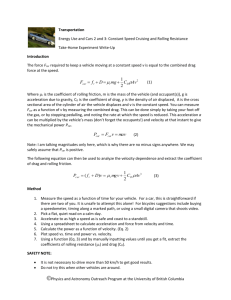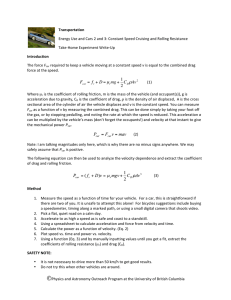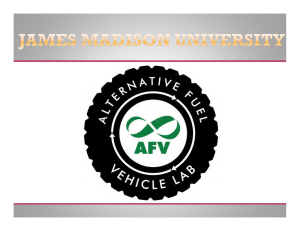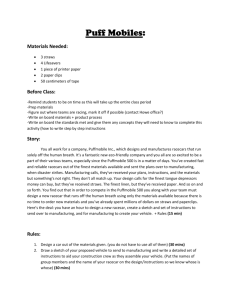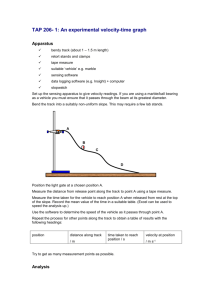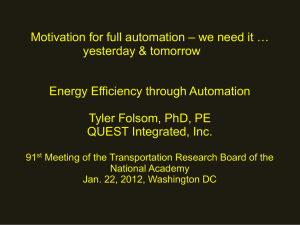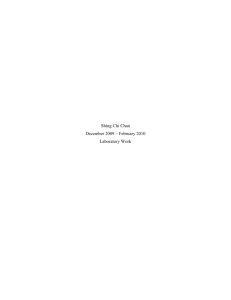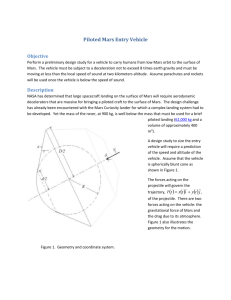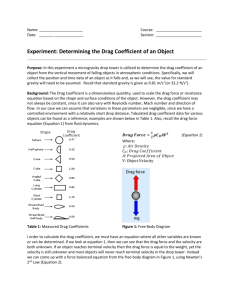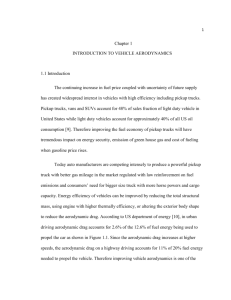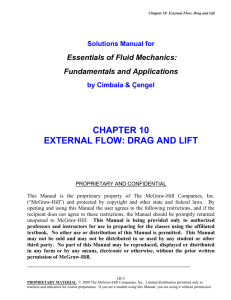SU-Cars_Take-Home_Experiment
advertisement
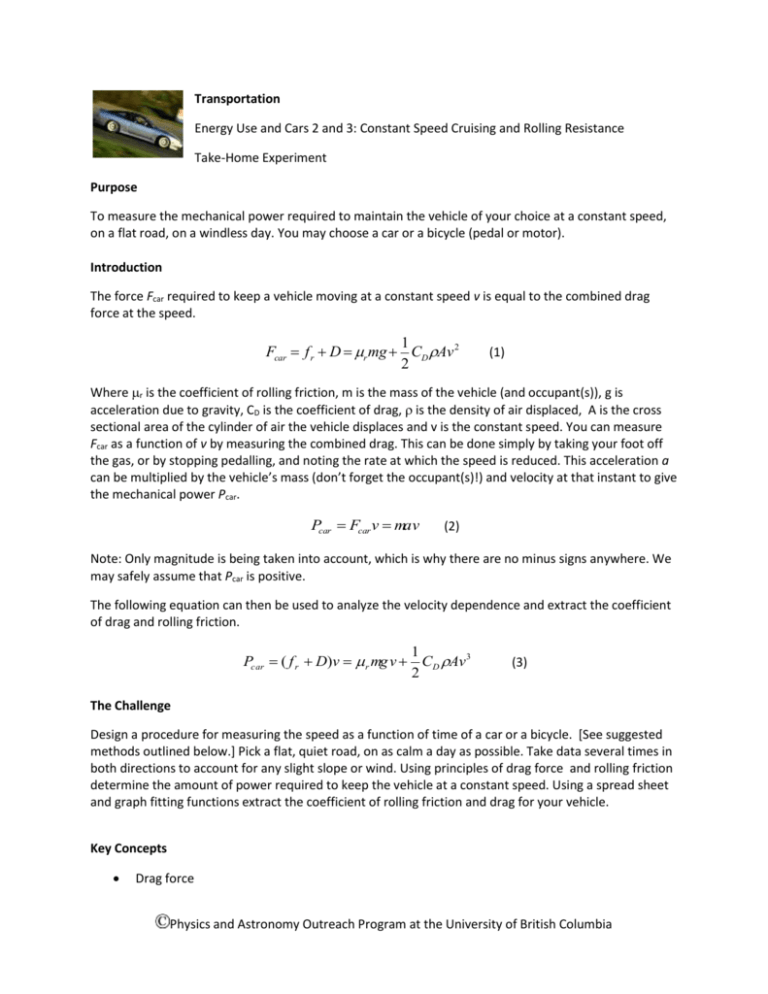
Transportation Energy Use and Cars 2 and 3: Constant Speed Cruising and Rolling Resistance Take-Home Experiment Purpose To measure the mechanical power required to maintain the vehicle of your choice at a constant speed, on a flat road, on a windless day. You may choose a car or a bicycle (pedal or motor). Introduction The force Fcar required to keep a vehicle moving at a constant speed v is equal to the combined drag force at the speed. 1 Fcar f r D r mg CD Av 2 2 (1) Where r is the coefficient of rolling friction, m is the mass of the vehicle (and occupant(s)), g is acceleration due to gravity, CD is the coefficient of drag, is the density of air displaced, A is the cross sectional area of the cylinder of air the vehicle displaces and v is the constant speed. You can measure Fcar as a function of v by measuring the combined drag. This can be done simply by taking your foot off the gas, or by stopping pedalling, and noting the rate at which the speed is reduced. This acceleration a can be multiplied by the vehicle’s mass (don’t forget the occupant(s)!) and velocity at that instant to give the mechanical power Pcar. Pcar Fcar v mav (2) Note: Only magnitude is being taken into account, which is why there are no minus signs anywhere. We may safely assume that Pcar is positive. The following equation can then be used to analyze the velocity dependence and extract the coefficient of drag and rolling friction. 1 Pcar ( f r D)v r mg v C D Av 3 2 (3) The Challenge Design a procedure for measuring the speed as a function of time of a car or a bicycle. [See suggested methods outlined below.] Pick a flat, quiet road, on as calm a day as possible. Take data several times in both directions to account for any slight slope or wind. Using principles of drag force and rolling friction determine the amount of power required to keep the vehicle at a constant speed. Using a spread sheet and graph fitting functions extract the coefficient of rolling friction and drag for your vehicle. Key Concepts Drag force Physics and Astronomy Outreach Program at the University of British Columbia Rolling friction Skills Data collection and experimental design. Calculate the power required to keep a vehicle moving at a constant speed. Graphical analysis and curve fitting. Materials Vehicle (car, bicycle) Tools for measuring speed and time Method 1. Measure the speed as a function of time for your vehicle. For a car, this is straightforward if there are two of you. It is unsafe to attempt this alone! For bicycles suggestions include buying a speedometer, timing along a marked path, or using a small digital camera that shoots video. 2. Pick a flat, quiet road on a calm day. 3. Accelerate to as high a speed as is safe and coast to a standstill. 4. Using a spreadsheet to calculate acceleration and force from velocity and time. 5. Calculate the power as a function of velocity. (Eq. 2) 6. Plot speed vs. time and power vs. velocity. 7. Using a function (Eq. 3) and by manually inputting values until you get a fit, extract the coefficients of rolling resistance (r) and drag (CD). SAFETY NOTE: It is not necessary to drive more than 50 km/h to get good results. Do not try this when other vehicles are around. Any experimental procedure that is dangerous will receive a mark of zero. Suggested assigned time: 2 weeks Questions to think about: 1. 2. 3. 4. 5. How will you measure and/or take into account wind speed and direction? What graphs will you plot? What are the limitations (errors) of your measurements? For cars, does your data depend on whether or not you are in gear or in neutral? Are your results reasonable? Rachel Moll and Chris Waltham (2009-12-08) Physics and Astronomy Outreach Program at the University of British Columbia
